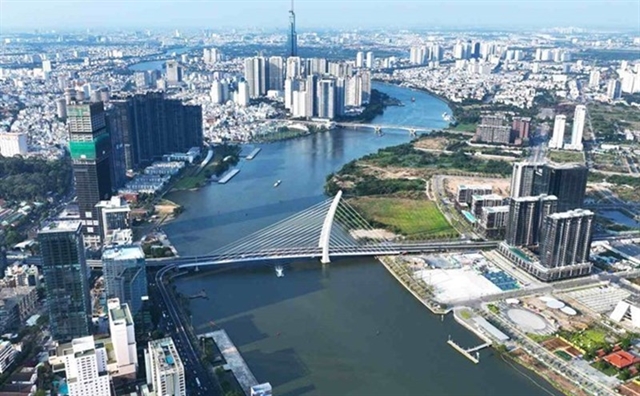 Society
Society

An increase in the regional minimum wage in 2018 has not yet been finalised because of differences over the margin of increase of the wage.
 |
| An increase in regional minimum wage for 2018 has yet to be finalised due to disagreements over the margin of increase.— Photo laodong.com.vn |
HÀ NỘI — An increase in regional minimum wage for 2018 has yet to be finalised due to disagreements over the margin of increase.
At the second debate on regional minimum wage for next year, held by the National Salary Council in Hà Nội yesterday, the Việt Nam General Confederation of Labour (VGCL), which represented employees, and the Việt Nam Chamber of Commerce and Industry (VCCI), which represented employers, failed to reach an agreement.
The VGCL called for an 8 per cent increase from the current minimum wage while the VCCI proposed 5 per cent.
Regional minimum wage rates are the base rates used for any arrangement between enterprises and employees on salary.
The wage rates are paid to employees who work under normal working conditions, meet monthly working hour standards and complete their obligations for agreed work duties.
Việt Nam currently has four regions ranked according to the socio-economic development level of each region. Region I includes the large districts and towns of Hà Nội, Hải Phòng, HCM City and Đồng Nai, as well as Bình Dương and Bà Rịa-Vũng Tàu
Since January 1, 2017, the regional minimum wage rate applicable for employees working for enterprises in Region I is VNĐ3,750,000 per month, in Region II is VNĐ3,320,000 per month, in Region III is VNĐ2,900,000 per month and in Region IV is VNĐ2,580,000 per month. The rates are 7.3 per cent higher than in 2016.
VCCI Vice Chairman Hoàng Quang Phòng said the 5 per cent increase proposal was made based on assessing more than 30 associations representing employers.
Increasing the regional minimum wage would lead to higher production costs for businesses, he said.
Experts said the current minimum wage met only 95 per cent of workers’ needs for basic living costs but no country has a minimum wage that meets basic standards of living for workers, he claimed.
If the minimum wage rose too high, it would add to businesses’ burden, he said. Businesses would have to restructure, which would result in some workers losing their jobs, he said.
Most enterprises still have difficulties, particularly those employing a huge number of workers such as textiles, garments, footwear and electronic enterprises, which would be greatly impacted by the regional minimum wage increase, Phong added.
A minimum wage increase should not only meet labourers’ basic living costs, but also ensure the development of enterprises, he said.
Mai Đức Chính, Vice Chairman of VGCL, said 2017 recorded better socio-economic development than 2016 so there was no reason for a low increase of regional minimum wage at 5 per cent.
He added that the regional minimum wage increase for 2018 should not be lower than 2017’s figure of 7.3 per cent.
The increase of 5 per cent was only enough to offset currency depreciation, he said.
Deputy Minister of Labours, Invalids and Social Affairs Doãn Mậu Diệp, also Chairman of the National Salary Council, said there were still two options on regional minimum wage increase for 2018. The two sides should continue discussing to reach a consensus on the increase for the final meeting scheduled for August 7 to submit to the Prime Minister for consideration.
If the two sides don’t reach an agreement on regional minimum wage increase at the final meeting, a vote will be held among participants of the final meeting to select one option, he said.
The National Salary Council will not make the decision as the negotiation process aims to improve the living conditions of workers while ensuring competitiveness of enterprises. — VNS




